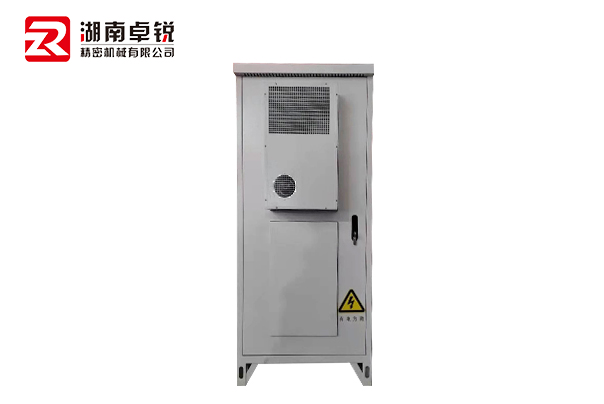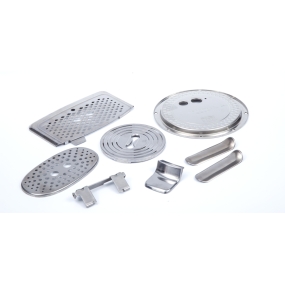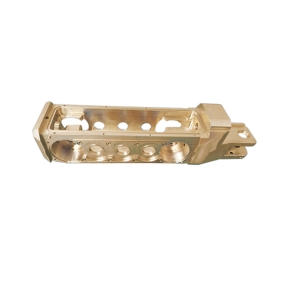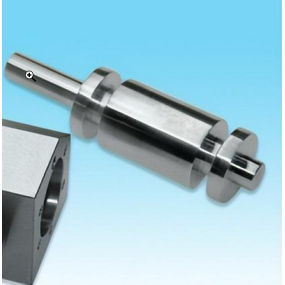Quid sunt praecepta tecnica fabricationis metallorum sterilis chassis stainless steel? Hodie discamus de chassis et tabulis metallis processione pariter cum editore.

The technical requirements for Sheet Metal Processing of stainless steel chassis mainly include material selection, processing accuracy, surface quality, structural design, heat dissipation performance, and protective performance. "
1. Material selection: Sheet metal chassis usually use high-quality metal materials such as stainless steel, aluminum alloy, etc. to ensure that they have good mechanical properties and corrosion resistance. Haec materia conformetur ad praecepta nationis et industriae standartarum ut qualitatem et fidelitatem suam assegurat.
2. Processing accuracity: During the processing, strict control should be exercised over dimensional tolerances and geometric tolerances to ensure that all components of the sheet metal chassis can fit accurately and avoid problems caused by excessive or insufficient tolerances.
3. Qualitate superficie: superficie cassis metallis fertilis, fluctus, et liberis scintibus, dentibus, et ceteris defectibus, ut aestheticam et vitam servationis suam assegurat.
4. Structural design: The sheet metal chassis should have good structural strength and rigidity, and be able to withstand certain external forces without deformation or damage.
5. Perfectus dissipationis calefactionis: Reasonable heat dissipation design can ensure the normal operation of electronic components inside the sheet metal chassis, avoiding performance degradation or damage caused by overheating.
6. Protective performance: Sheet metal chassis should have good sealing, dust and water resistance to protect internal electronic components from external environmental damage. In addition, factors such as electromagnetic compatibility should also be considered to ensure that the sheet metal chassis does not interfere with the surrounding environment during use.
cum venerit ad processionem chassis steelis inmaculatis, sequentibus etiam notabuntur:
Key points for stainless steel cutting: a high strength of stainless steel, it causes significant tools wear and a high rate of defective products, and generally does not require CNC punching. In conventional processing and production, laser CNC cutting machines and plasma CNC cutting machines are generally used, and the thickness range of the processed plate generally does not exceed 3.0mm. When stainless steel is laser cut, nitrogen gas can be used to obtain corners without oxidation and burns. The appearance requirements are high, and the surface of the parts can be covered with a special laser film to avoid surface scratches. Stella laser sterilis secitus celeriter velocitatem secitum est, lentem et etiam incisionem, et generis non requirit subsequente deburrendum.
Key points of stainless steel bending: Stainless steel has poorer thermal conductivity and lower elongation than ordinary low carbon steel, resulting in more required deformation force; Comparatum est cum fermento carbonium et aluminium, habet fortem tendentiam revocare dum bending. When bending, the bending angle of the workpiece should be greater than the bending angle of the carbon steel part.
In summary, the technical requirements for sheet metal processing of stainless steel chassis cover multiple aspects such as material selection, processing accuracy, surface quality, structural design, heat dissipation performance, and protective performance. At the same time, attention should be paid to the special processing points of stainless steel materials to ensure that the processed chassis meets technical requirements and has good usability.


 English
English Spanish
Spanish Arabic
Arabic French
French Portuguese
Portuguese Belarusian
Belarusian Japanese
Japanese Russian
Russian Malay
Malay Icelandic
Icelandic Bulgarian
Bulgarian Azerbaijani
Azerbaijani Estonian
Estonian Irish
Irish Polish
Polish Persian
Persian Boolean
Boolean Danish
Danish German
German Filipino
Filipino Finnish
Finnish Korean
Korean Dutch
Dutch Galician
Galician Catalan
Catalan Czech
Czech Croatian
Croatian Latvian
Latvian Romanian
Romanian Maltese
Maltese Macedonian
Macedonian Norwegian
Norwegian Swedish
Swedish Serbian
Serbian Slovak
Slovak Slovenian
Slovenian Swahili
Swahili Thai
Thai Turkish
Turkish Welsh
Welsh Urdu
Urdu Ukrainian
Ukrainian Greek
Greek Hungarian
Hungarian Italian
Italian Yiddish
Yiddish Indonesian
Indonesian Vietnamese
Vietnamese Haitian Creole
Haitian Creole Spanish Basque
Spanish Basque








